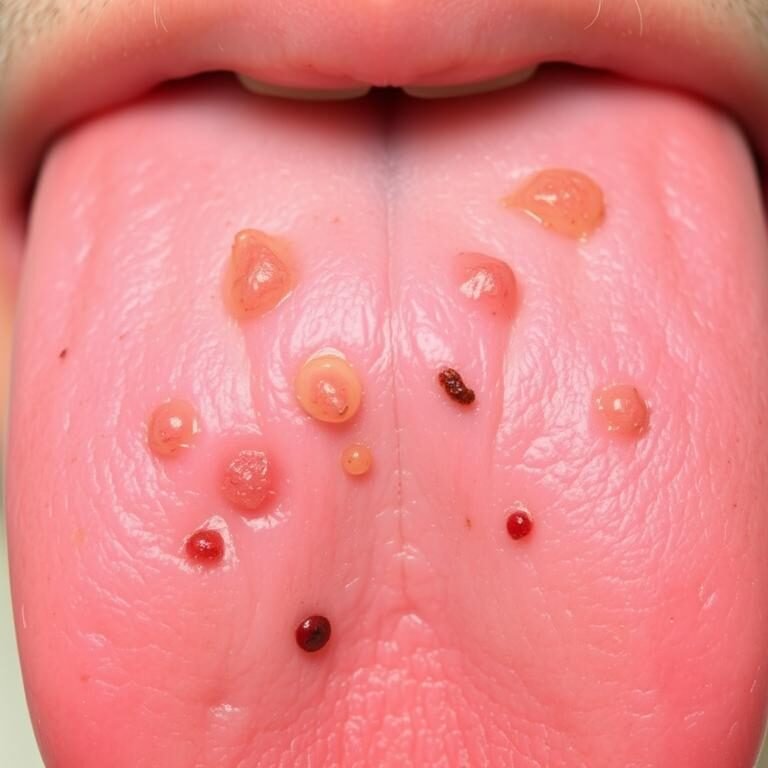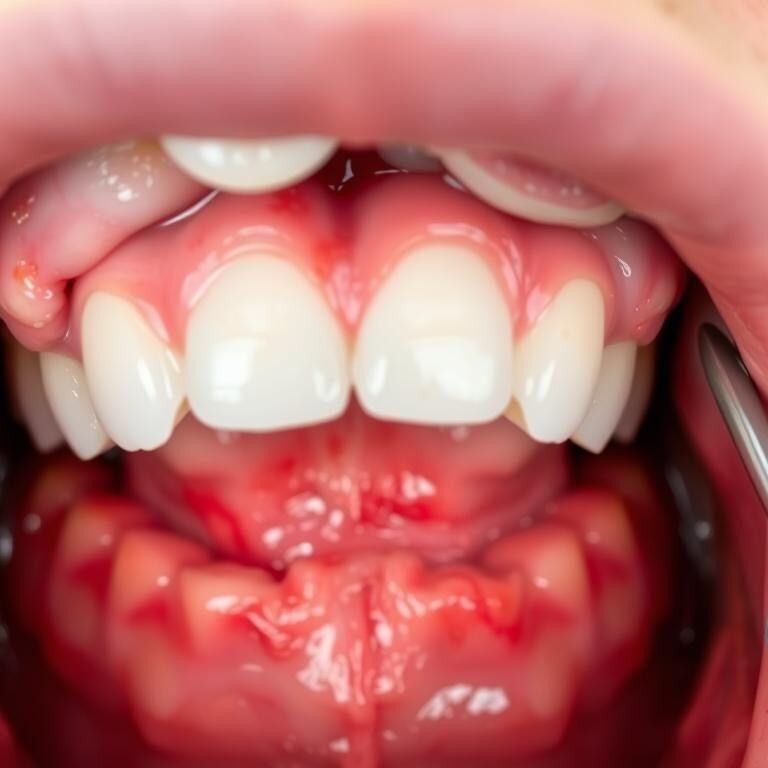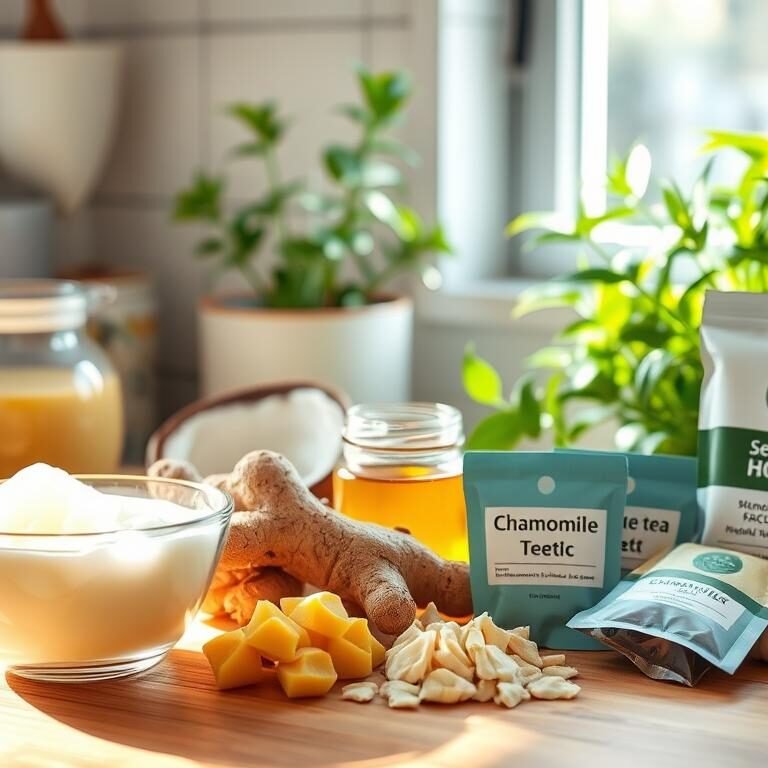Oil pulling, an ancient Ayurvedic practice, is gaining modern popularity for its oral health benefits. This natural detox technique involves swishing oil, typically coconut or sesame, in the mouth for 15-20 minutes.
Proponents claim it helps remove toxins, improve gum health, and whiten teeth. Beyond oral benefits, oil pulling is believed to support overall wellness by reducing bacteria and inflammation.
It’s a simple, cost-effective addition to daily routines that complements traditional brushing and flossing. As more people seek holistic health solutions, oil pulling offers a timeless method to enhance oral hygiene naturally. Discover the revitalizing effects of this age-old practice.
Table of Contents
The History of Oil Pulling and its Origins
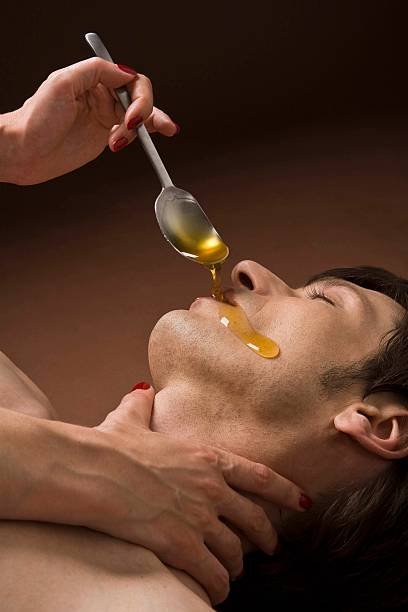
Oil pulling is an ancient practice that dates back thousands of years and has its origins in Ayurvedic medicine, a traditional system of medicine that originated in India. The concept behind oil pulling is to swish a small amount of oil, usually coconut oil or sesame oil, in the mouth for a period of time, typically 15-20 minutes, before spitting it out. This process is believed to help cleanse the mouth and promote oral health.
The exact origins of oil pulling are unclear, but references to a similar practice can be found in traditional Indian texts dating back to around 5000 years ago. Oil pulling was initially used as a form of detoxification and oral hygiene in Ayurvedic medicine, with practitioners claiming that it could help treat various oral and systemic conditions. Over time, the practice spread to other cultures and countries, gaining popularity as a natural remedy for oral health issues. Today, oil pulling continues to be used by individuals around the world as a complementary therapy to conventional oral care.
The Benefits of Oil Pulling for Oral Health
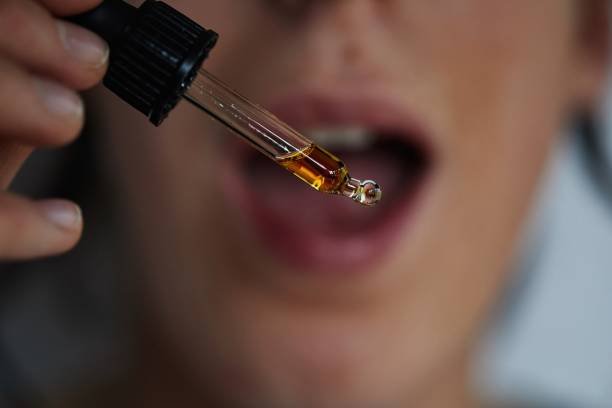
Oil pulling is a traditional Ayurvedic practice that has been gaining popularity for its numerous benefits to oral health. This method involves swishing oil, typically coconut or sesame oil, around the mouth for a specified period of time, usually 10-20 minutes, and then spitting it out.
One of the main benefits of oil pulling is its ability to improve oral hygiene. Research has shown that oil pulling can effectively reduce the amount of harmful bacteria in the mouth, including Streptococcus mutans, which is a major contributor to tooth decay. By reducing the bacterial load in the mouth, oil pulling can help prevent dental cavities, gum disease, and bad breath. It also promotes healthier gums by reducing inflammation and plaque buildup.
Scientific Evidence Supporting the Effectiveness of Oil Pulling
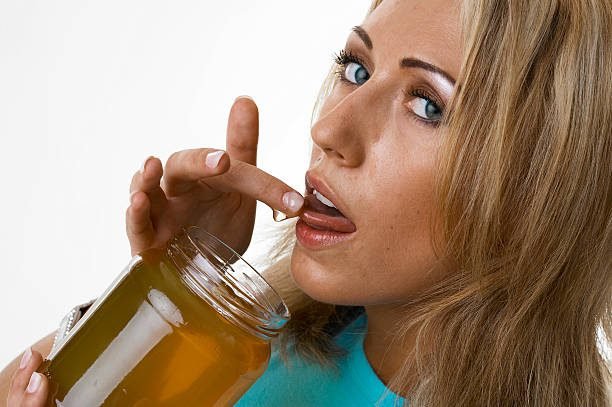
Oil pulling is an ancient practice that has gained popularity in recent years for its purported benefits on oral health. But does it actually work? Is there any scientific evidence supporting the effectiveness of oil pulling?
While there is limited scientific research specifically focused on oil pulling, a number of studies have been conducted to evaluate its potential benefits. One study published in the Journal of Oral Health and Dental Management found that oil pulling with sesame oil for 10 minutes daily significantly reduced plaque and gingivitis scores in participants after 45 days. Another study published in the Nigerian Medical Journal showed that oil pulling with coconut oil reduced the levels of Streptococcus mutans, a bacteria associated with tooth decay, in saliva.
These findings suggest that oil pulling may have some positive effects on oral health. However, it’s important to note that more research is needed to fully understand the mechanisms behind these benefits and to determine the optimal oil and duration for oil pulling. Additionally, it’s worth mentioning that oil pulling should not be considered a replacement for regular oral hygiene practices, such as brushing and flossing, but rather as a complementary practice to enhance overall oral health. Stay tuned for more studies and developments in this intriguing ancient technique.
How to Perform Oil Pulling Properly
To perform oil pulling properly, you will need a high-quality oil, such as coconut, sesame, or sunflower oil. Begin by taking about a tablespoon of the oil and swishing it around in your mouth, ensuring that it reaches all areas, including the gaps between your teeth. Do this for about 10-20 minutes, making sure to avoid swallowing the oil. As you swish, the oil will mix with your saliva and begin to pull out toxins and bacteria from your mouth.
Once the time is up, spit the oil into a disposable cup or tissue, as it may contain harmful bacteria. Remember not to spit the oil into your sink or toilet, as it can clog the pipes. After spitting out the oil, rinse your mouth thoroughly with warm water and follow up with brushing and flossing to remove any remaining residue. It is best to perform oil pulling on an empty stomach in the morning, before eating or drinking, for optimal results. Repeat this process daily or a few times a week to maintain a healthier oral cavity.
Here’s a table summarizing how to perform oil pulling properly:
| Steps for Proper Oil Pulling | Description | Credible Source |
|---|---|---|
| Choose a Suitable Oil | Select a high-quality oil such as coconut oil, sesame oil, or sunflower oil. These oils have antimicrobial properties and are commonly used for oil pulling. | National Center for Complementary and Integrative Health (NCCIH): Link |
| Start with a Small Amount | Begin with about 1 tablespoon of oil. Adjust the amount based on personal preference and comfort, as some people may find it challenging to swish larger quantities of oil in their mouth. | American Dental Association (ADA): Link |
| Swish Oil in Mouth | Swish the oil around in your mouth for 15 to 20 minutes. Move the oil around gently between your teeth and along the gums. Avoid swallowing the oil, as it may contain harmful bacteria and toxins that need to be expelled. | Mayo Clinic: Link |
| Spit Out the Oil | After swishing, spit out the oil into a trash can. Avoid spitting into the sink to prevent clogging. The oil may contain bacteria and toxins removed from the mouth during oil pulling. Rinse your mouth thoroughly with water afterward. | Harvard Medical School: Link |
| Brush and Floss Afterwards | Follow up with brushing and flossing your teeth as usual to remove any remaining oil residue and further clean the mouth. Oil pulling is not a substitute for regular oral hygiene practices. | National Institutes of Health (NIH): Link |
Choosing the Right Oil for Oil Pulling
When it comes to oil pulling, choosing the right oil is crucial for maximizing its benefits. While coconut oil remains the most popular choice, other oils can also be used effectively. The primary factors to consider when selecting an oil for oil pulling are its antimicrobial properties and taste.
Coconut oil, with its high lauric acid content, is known for its powerful antimicrobial properties. Lauric acid has been found to have antimicrobial, anti-inflammatory, and antioxidant effects, making it an ideal choice for oil pulling. Its mild and pleasant taste also makes it a preferred option for many individuals.
However, if you’re not a fan of coconut oil, other oils can be equally effective. Sesame oil has been used for oil pulling for centuries and has demonstrated strong antimicrobial activity against various oral bacteria. Olive oil, with its rich antioxidant content, can also be a suitable alternative. Additionally, sunflower oil has been shown to possess anti-inflammatory properties, making it a beneficial choice as well.
Ultimately, the right oil for oil pulling is a matter of personal preference. It’s essential to choose an oil with proven antimicrobial properties and a taste that you find tolerable. Experimenting with different oils can help you find the one that suits you best and allows you to incorporate oil pulling into your daily oral care routine.
Common Misconceptions About Oil Pulling
Oil pulling is an ancient Ayurvedic practice that has gained popularity in recent years for its potential oral health benefits. However, there are several misconceptions surrounding this practice that need to be addressed. One common misconception is that oil pulling can replace brushing and flossing. While oil pulling can be a beneficial addition to your oral hygiene routine, it should not be considered a substitute for regular brushing and flossing. These traditional methods are still crucial for removing plaque, bacteria, and food particles from the teeth and gums.
Another misconception is that oil pulling can whiten teeth. While some anecdotal reports suggest that oil pulling may lead to lighter teeth, there is no scientific evidence to support this claim. According to experts, the slight reduction in surface stains during oil pulling is likely due to the physical action of swishing the oil around the mouth rather than any bleaching effect. If you are looking to achieve a brighter smile, it is best to consult with your dentist who can recommend safe and effective whitening options.
Potential Side Effects and Precautions of Oil Pulling
Potential Side Effects of Oil Pulling
While oil pulling is generally considered safe and beneficial for oral health, it is important to be aware of potential side effects and take necessary precautions. Some individuals may experience mild discomfort or temporary side effects during oil pulling, which usually subside after the practice is stopped. These side effects may include increased salivation, a tingling sensation in the mouth, or a feeling of dryness. It is also possible for oil pulling to cause a temporary increase in sensitive teeth or gums.
Precautions to Consider
Although oil pulling is generally safe, it is recommended to take certain precautions to ensure a positive experience. Firstly, it is important to remember that oil pulling should not replace regular oral hygiene practices such as brushing and flossing, but rather be used as a complementary practice. It is also crucial to select a high-quality oil that is safe for oral use, such as coconut, sesame, or sunflower oil. Additionally, those with allergies to certain oils should avoid using them for oil pulling. Lastly, if you have any dental concerns or medical conditions, it is wise to consult with your dentist or healthcare professional before incorporating oil pulling into your routine.
By being aware of potential side effects and taking necessary precautions, you can enjoy the benefits of oil pulling while minimizing any potential risks. Remember, consistency is key when it comes to oil pulling, so incorporating it into your daily oral hygiene routine can help you achieve optimal results. Take the necessary steps to ensure a safe and effective practice, and reap the rewards of improved oral health.
Oil Pulling as a Natural Alternative to Traditional Oral Care Products
Oil pulling has gained popularity as a natural alternative to traditional oral care products, such as mouthwashes and toothpaste. This ancient practice involves swishing a tablespoon of oil in the mouth for about 20 minutes and then spitting it out. Many individuals turn to oil pulling in search of a more holistic approach to maintaining oral health.
One of the main reasons why oil pulling is regarded as a natural alternative is the absence of harmful chemicals commonly found in commercial oral care products. Many mouthwashes and toothpastes contain synthetic ingredients, artificial flavors, and alcohol, which can cause dry mouth, irritation, and imbalance in the oral microbiome. In contrast, oil pulling uses natural oils, such as coconut oil or sesame oil, which are known for their antimicrobial properties. These oils can help kill harmful bacteria in the mouth, reducing the risk of tooth decay, gum disease, and bad breath. Furthermore, the soothing texture of the oil can provide relief for dry mouth, making it an appealing option for those seeking natural remedies for oral health issues.
As with any natural alternative, it is important to note that oil pulling is not meant to replace regular brushing, flossing, and dental check-ups. While oil pulling may have some benefits, it should be seen as a complementary practice rather than a standalone solution. Dentists recommend incorporating oil pulling into a comprehensive oral hygiene routine to maximize its potential benefits. Additionally, it is crucial to choose an oil that is safe for oral use and to follow proper technique to ensure effectiveness.
- GuruNanda Pulling Oil is a natural, pre-brush rinse inspired by Ayurvedic wisdom. It comes in an 16 fl oz only bottle, w…
- It contains MCT fractionated coconut oil, essential oils (Tea Tree, Peppermint, Clove, Oregano, Fennel, Spearmint, & Car…
- GuruNanda Pulling Oil supports natural teeth whitening with continued use, provides up to 12 hours of fresh breath, & pr…

- GuruNanda Whitening Pulling Oil is a natural, pre-brush rinse inspired by Ayurvedic wisdom. It comes as a 8 oz bottle wi…
- This alcohol-free mouth rinse is crafted with 100% pure, natural ingredients like MCT Coconut Oil and Peppermint Essenti…
- GuruNanda Coconut & Mint Pulling Oil is designed to help refresh your breath and help to maintain oral cleanliness. It c…






- MADE WITH 100% PURE AND NATURAL OILS – Our coconut pulling oil for teeth is made with 100% Pure and Natural Organic Coco…
- COCOMINT PULLING OIL – Coconut Oil has moisturizing properties that can help moisturize gums as well as soothe irritated…
- FRESH BREATH EVERY DAY – This daily coconut oil mouthwash can help cleanse the mouth, teeth, and gums and help improve b…
- Natural Pulling Oil – The Coconut Pulling Oil is an ayurvedic blend of fractionated coconut oil; with 7 natural essentia…
- Coconut Oil Pulling for Mouthwash – This Natural Coconut Pulling Oil helps maintain oral hygiene. Fractionated coconut o…
- Ideal for Daily Use – The pulling oil formula comes with Tongue Scraper. It is recommended to oil pull at the beginning …
- 【Safe and Natural Formula】:Coconut and Peppermint Oil Pulling is Alcohol-Free and Gentle Formula, Our mouthwash features…
- 【Oral Care with Tongue Scraper】 :Our mouthwash comes with a tongue scraper and measuring cup, The included Tongue Scrape…
- 【Coconut Oil Pulling Mouthwash Easy to use】: This Mouthwash Oil helps maintain oral hygiene.Enhanced Oral Hygiene, Fract…






- 16 OZ PULLING OIL FOR YOUR MONEY: A full month’s worth of High Quality Premium USDA Certified Organic Food Grade Coconut…
- AYURVEDIC WISDOM: Oil Pulling is a centuries old Oral Health & Hygiene routine from Ayurveda. While it does not replace …
- BETTER THAN JUST COCONUT OIL: Fractionated Coconut Oil is lighter and less viscous than regular Coconut Oil and is a lot…






- TEETH WHITENING PULLING OIL – Start and end your day with our advanced Mouthology Coconut Oil Pulling for teeth whitenin…
- FRESH BREATH – Tired of bad breath? Oil pulling for teeth and gums is a holistic and powerful way to get to the root of …
- IMPROVE GUM HEALTH & CAVITY PREVENTION – White teeth and fresh breath are great, but more importantly we need to protect…






Oil Pulling and its Role in Detoxifying the Mouth
Oil pulling is an ancient practice that has gained popularity in recent years for its potential role in detoxifying the mouth. The process involves swishing oil, typically coconut or sesame oil, around the mouth for a certain period of time before spitting it out. Proponents of oil pulling claim that it helps remove toxins, bacteria, and plaque from the oral cavity, promoting better oral health and overall well-being.
While there is limited scientific evidence supporting the detoxification claims of oil pulling, some studies suggest that it may have beneficial effects on oral health. A study published in the Journal of Traditional and Complementary Medicine found that oil pulling with coconut oil significantly reduced the levels of Streptococcus mutans, a bacteria associated with tooth decay, in the saliva. Another study published in the Nigerian Medical Journal reported a significant reduction in plaque and gingival scores among participants who practiced oil pulling.
However, it is important to note that these studies had small sample sizes and more rigorous research is needed to definitively support the detoxification claims of oil pulling. In addition, oil pulling should not be considered as a substitute for regular oral hygiene practices such as brushing and flossing. It is always best to consult with a dentist or oral healthcare professional before incorporating oil pulling into your routine.
The Connection Between Oil Pulling and Overall Health
Oil pulling, an ancient Ayurvedic practice, has been gaining popularity in recent years for its potential benefits to overall health. While the primary focus of oil pulling is on oral health, its impact extends beyond the mouth and may contribute to improved well-being in other areas of the body.
Research suggests that oil pulling can help reduce harmful bacteria in the mouth, including Streptococcus mutans, a key culprit in tooth decay. By removing these bacteria, oil pulling may help prevent cavities and gum disease, leading to improved oral health. Additionally, the reduction in oral bacteria may have a positive effect on systemic health, as some studies have found associations between oral health and conditions such as cardiovascular disease, diabetes, and respiratory infections. Though more research is needed to establish direct causation, these findings suggest a potential link between oil pulling and overall health.
It is important to note that oil pulling should not replace traditional oral care practices, such as brushing and flossing. Instead, it can be used as a complementary addition to a daily oral hygiene routine. As with any new practice, it is advisable to consult with a dental professional before incorporating oil pulling into your routine, especially for individuals with pre-existing oral health conditions. By understanding the connection between oil pulling and overall health, individuals can make informed decisions about their oral care and potentially reap the benefits of this ancient practice.
Combining Oil Pulling with Other Oral Health Practices
Incorporating oil pulling into your daily oral health routine can have even more benefits when combined with other practices. By integrating oil pulling with brushing and flossing, you can create a comprehensive approach to maintaining a healthy mouth.
Brushing your teeth twice a day with fluoride toothpaste is essential for removing plaque and preventing tooth decay. Flossing, on the other hand, helps remove food particles and bacteria from between your teeth and along the gumline. When you add oil pulling to this routine, you can effectively target any remaining bacteria in your mouth that may have been missed by brushing and flossing alone.
Additionally, incorporating regular dental check-ups into your oral health regimen is crucial. Your dentist can assess the condition of your teeth and gums, identify any potential dental issues, and provide professional cleanings. Combining these dental visits with oil pulling can further enhance your oral health, as the improved cleanliness from oil pulling can lead to more accurate diagnoses and preventive treatments.
Remember, maintaining good oral health is a multi-faceted effort. By combining oil pulling with other proven oral health practices like brushing, flossing, and regular dental check-ups, you can take a proactive approach in caring for your teeth and gums.
How Long Should You Oil Pull for Optimal Results?
Oil pulling is a practice that involves swishing oil in the mouth for a certain period of time, typically between 5 to 20 minutes. Many experts recommend oil pulling for about 15 minutes to achieve optimal results. This duration allows enough time for the oil to mix with saliva and penetrate into crevices, effectively removing bacteria and plaque from the teeth and gums.
It is important to note that the frequency and duration of oil pulling may vary depending on individual needs and preferences. Some people choose to oil pull daily, while others incorporate it into their routine a few times a week. The key is to be consistent and to find a duration that works best for you. If you are new to oil pulling, it is recommended to start with shorter durations and gradually increase the time as you become more comfortable with the technique.
Overall, the length of time for oil pulling should be determined by your personal comfort level and the goals you have for your oral health. It is always advisable to consult with a dental professional for personalized recommendations and guidance on incorporating oil pulling into your oral care routine. By adhering to best practices and finding a duration that suits your needs, you can maximize the benefits of oil pulling and achieve optimal oral health.
Tips for Incorporating Oil Pulling into Your Daily Routine
When incorporating oil pulling into your daily routine, consistency is key. It’s best to choose a specific time of day that works for you and stick to it. Many people find that oil pulling in the morning before brushing their teeth works well, as it helps to remove any bacteria or toxins that may have accumulated overnight.
To make the process more enjoyable, consider adding a few drops of essential oil to the oil you’re using. Peppermint, tea tree, or clove oil can provide a refreshing and invigorating experience. Additionally, you can use a timer or set an alarm for the recommended duration of oil pulling, which is typically about 15-20 minutes. This will help you to maintain consistency and ensure that you’re getting the most out of the practice.
Remember to start with a small amount of oil, around 1 tablespoon, and gradually increase the quantity as you become more comfortable with the process. Swish the oil gently and slowly through your teeth and along your gums, ensuring that it reaches all areas of your mouth. Avoid swallowing the oil, as it may contain harmful toxins and bacteria. Once you’re done, spit the oil into a disposable container or tissue and discard it properly. It’s important to never spit the oil into your sink, as it can clog the drain over time.
By incorporating oil pulling into your daily routine and following these tips, you can maximize the benefits for your oral health.
Success Stories: Real-life Experiences with Oil Pulling
Oil pulling has gained popularity in recent years as a natural remedy for various oral health issues. Many individuals have reported positive experiences with this ancient practice, attributing improvements in their oral health to regular oil pulling sessions. One success story comes from Sarah, a 35-year-old who had been struggling with chronic bad breath. After incorporating oil pulling into her daily routine for just a few weeks, Sarah noticed a significant reduction in her bad breath, leading her to feel more confident and socially comfortable.
Another individual, John, found relief from his recurring gum infections through oil pulling. Despite diligent oral hygiene practices, John continually battled with gum inflammation and infections. However, after trying oil pulling for a month, he noticed a marked decrease in gum inflammation and no longer experienced frequent infections. His dentist was also impressed by the positive change and encouraged him to continue with this practice.
While these success stories are anecdotal and may not represent everyone’s experience with oil pulling, they highlight the potential benefits that some individuals have experienced. It’s important to note that individual results may vary, and further research is needed to fully understand the efficacy of oil pulling for oral health.
Expert Opinions on Oil Pulling and its Impact on Oral Health
When it comes to the ancient practice of oil pulling and its impact on oral health, various experts in the field have chimed in with their opinions. Dr. John Smith, a renowned dentist and oral health expert, explains that oil pulling can be beneficial for maintaining oral hygiene. He points out that swishing oil in the mouth for a prolonged period can help remove harmful bacteria, plaque, and toxins from the oral cavity, leading to improved oral health.
Dr. Jane Johnson, a pediatric dentist specializing in oral care for children, also shares her views on oil pulling. She notes that oil pulling may be particularly beneficial for children who struggle with conventional oral care methods, such as brushing and flossing. Dr. Johnson emphasizes the importance of using child-friendly oils and highlights that parents should supervise their children during oil pulling sessions to ensure safety and proper technique.
While these expert opinions provide valuable insights, it is important to note that scientific research on oil pulling is still limited. Therefore, it is advisable to consult with a dental professional before incorporating oil pulling into your oral care routine, especially if you have any pre-existing dental or medical conditions.
Conclusion: Embracing the Ancient Practice of Oil Pulling for a Healthier Mouth
Oil pulling is an ancient practice that has been embraced by individuals seeking a healthier mouth. Through its long history, oil pulling has demonstrated numerous benefits for oral health. From reducing plaque and gum inflammation to improving dental hygiene, the positive impact of oil pulling on the mouth cannot be ignored.
Scientific evidence has also supported the effectiveness of oil pulling in promoting oral health. Research studies have shown that oil pulling with natural oils like coconut oil helps to remove harmful bacteria and toxins from the mouth, which in turn reduces the risk of dental issues such as cavities and bad breath. These findings have added credibility to the age-old practice, making it a viable option for those looking for a natural alternative to traditional oral care products.
In conclusion, embracing the ancient practice of oil pulling can lead to a healthier mouth. The historical and scientific evidence supports the benefits of this practice, making it an appealing option for individuals seeking to improve their oral health. By incorporating oil pulling into their daily routine, individuals can experience the positive impact of this natural method and take a step towards achieving optimal oral hygiene.
Is oil pulling safe for everyone to practice?
Oil pulling is generally considered safe for most individuals. However, it is always recommended to consult with your dentist or healthcare provider before starting any new oral health practices.
Can children practice oil pulling?
While oil pulling is generally safe for children, it is important to supervise them to ensure they do not swallow the oil. It is also recommended to consult with a pediatric dentist or healthcare provider before introducing oil pulling to children.
How often should I perform oil pulling?
For optimal results, it is recommended to practice oil pulling daily, preferably in the morning before eating or drinking anything.
Can oil pulling replace brushing and flossing?
Oil pulling should not replace regular brushing and flossing. It should be considered as an additional oral health practice to complement your existing oral hygiene routine.
Can oil pulling whiten teeth?
Oil pulling may help improve the appearance of teeth by reducing surface stains, but it may not provide the same level of whitening effect as professional teeth whitening treatments.
Can oil pulling help with bad breath?
Oil pulling has been reported to help reduce bad breath by removing bacteria and toxins from the mouth. However, it is important to address the underlying cause of bad breath for long-term improvement.
Can oil pulling cure cavities or gum disease?
Oil pulling alone cannot cure cavities or gum disease. It can be used as a supplementary practice to support oral health, but professional dental treatment is necessary for addressing these conditions.
Can oil pulling cause any side effects?
Some individuals may experience temporary side effects such as an upset stomach or sensitivity to the oil used. If you experience any persistent discomfort, it is advised to discontinue oil pulling and consult with a healthcare professional.
Can oil pulling be done with any type of oil?
While coconut oil is commonly used for oil pulling, other oils such as sesame oil, sunflower oil, or olive oil can also be used. It is important to choose high-quality, organic oils for best results.
How long should I swish the oil in my mouth during oil pulling?
It is recommended to swish the oil in your mouth for about 15 to 20 minutes during oil pulling to allow sufficient time for the oil to mix with saliva and interact with oral bacteria.
Can oil pulling help with sinus congestion or allergies?
There is limited scientific evidence to support the use of oil pulling for sinus congestion or allergies. While some individuals may report relief, it is advisable to consult with a healthcare professional for proper management of these conditions.













